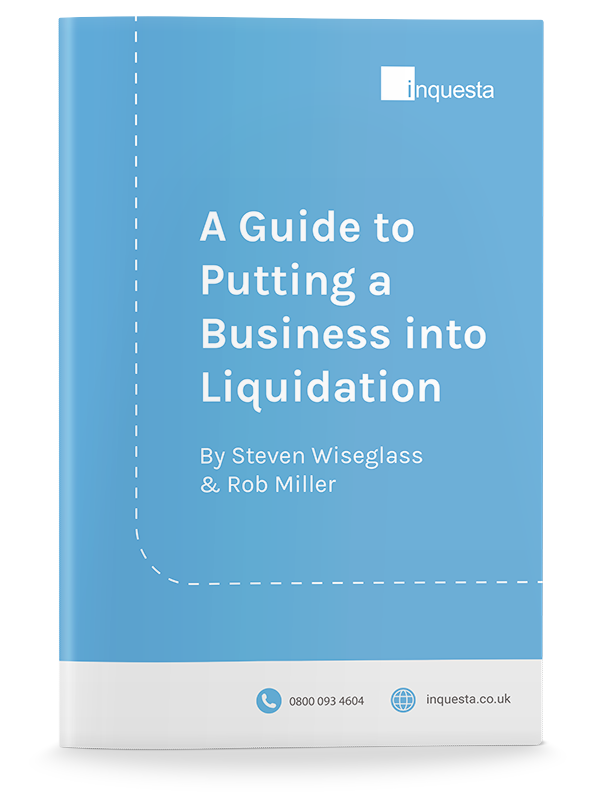What is Administration of a Company?
Company administration occurs when a business is faced with serious cash flow issues, and the threat of insolvency is inevitable. An administrator is appointed, who must attempt to balance helping the business run more effectively to promote a healthier future, while ensuring that all creditors are paid what they are owed.
Administration in business can represent an opportunity for a company to attempt to regain some semblance of control of their own financial situation. This is done by gaining some clear space to take stock of their operation, assess any wrongdoings, and work out how best to repay creditors —
without them breathing down their necks.
Going into administration means your company is effectively taken under the management of an independent administrator — known as an insolvency practitioner (IP). They will act on behalf of the creditors to ensure that they receive the money owed, while considering whether the business has the possibility to successfully trade in the future. This will be done by assessing the viability of restructuring company operations or shifting focus to other aspects of the firm to promote future success. However, it is possible that the issues plaguing the company could be deemed too much to overcome, and it will need to be liquidated.
The process of administration is set out within The Insolvency Act 1968 and aims to put an official moratorium on all legal proceedings a business might be facing. For administration to be sanctioned by the court, a judge must feel that it is a correct and justifiable course of action, and represents the best opportunity for the company’s creditors to receive the money owed to them.
The act of going into administration can be intimidating for business owners. For some, it has a reputation for being the final straw for a dying company. In reality, this is a misconception due to the severity of the situation that many firms who enter administration have found themselves in. If executed correctly at the optimal time, administration can be the saving grace for your business when it needs it most.
How an Insolvency Practitioner Helps a Company Going into Administration
Once appointed, the company administrator will completely take over the running and management of the business. They will make all the key decisions on how the firm will operate going forward while in administration. Directors lose their powers upon the appointment of an administrator, and do not regain them until the administration period is over.
The administrator primarily holds a duty to the creditors, to ensure that they are repaid everything they are owed.
However, the administrator is also committed to restructuring the company’s operation to increase efficiency and long-term sustainability.
The Responsibilities of an Insolvency Practitioner Towards Companies Entering Administration
An insolvency practitioner has several vital responsibilities to any company entering administration. These often include:
- Always acting in a fair and honourable manner throughout the administration process
- Saving the business as a going concern
- Obtaining a more beneficial result for creditors than the business liquidating would provide
- Realising company assets to make a distribution to secured/preferential creditors
- Always exercise reasonable caution to obtain the best possible price for any company assets sold off.
Free eBook: A Guide to Putting a Business into Liquidation
If you believe your business may be in distress, understanding the warning signs early is essential to securing the best possible outcome. In our free guide, we explore the process of putting a business into liquidation, what options you have when it comes to insolvency, the impact liquidation has on stakeholders, and much more.

The Company Administration Process
Once appointed as administrator, an insolvency practitioner will make attempts to save the business, while formulating a plan to repay creditors. The company administration process will be different for every firm. While the steps may vary, aspects such as the statement of affairs, administrator evaluation, and administrator proposals will act as a general guideline that many cases will follow.
How Inquesta can Assist Companies Facing Administration
If your business is facing administration, Inquesta possesses an expert team with all of the knowledge and expertise needed to review the problem and assist you in devising a solution that works for you and your creditors, to attempt to build a brighter future.
Our specialists will work with you to turn around a financial crisis, giving your company the best possible chance of recovery and potentially growing for years to come.
Inquesta strives to always have the best interests of our clients as the number one priority in every single thing we do — meaning that no matter what you come to us with, you are guaranteed a personal, unmatched level of care.
When it comes to administration, our main goals are to ensure that your creditors are repaid and your company is saved. No matter the situation, the specialist team at Inquesta can help guide you through the entire process.
Get In Touch
Our Specialist Team
Inquesta has amassed a dedicated team that are here to assist you throughout the administration process.

Steven Wiseglass
Director of Insolvency
A co-founder of Inquesta, Steven is a licensed Insolvency Practitioner with over a decade of experience in the field. He is a member of the Insolvency Practitioners Association, Association of Business Recovery Professionals (R3), and his insolvency licence is issued by the Insolvency Practitioners Association. In addition, he sits on the R3 committee of the North West Regional Committee.
Steven specialises in advising directors of small to medium-sized businesses, and has a wealth of expertise in providing the most appropriate advice whatever the firm’s circumstances may be. He has also been instrumental in helping company directors save their business and rebuild them into successful enterprises.





